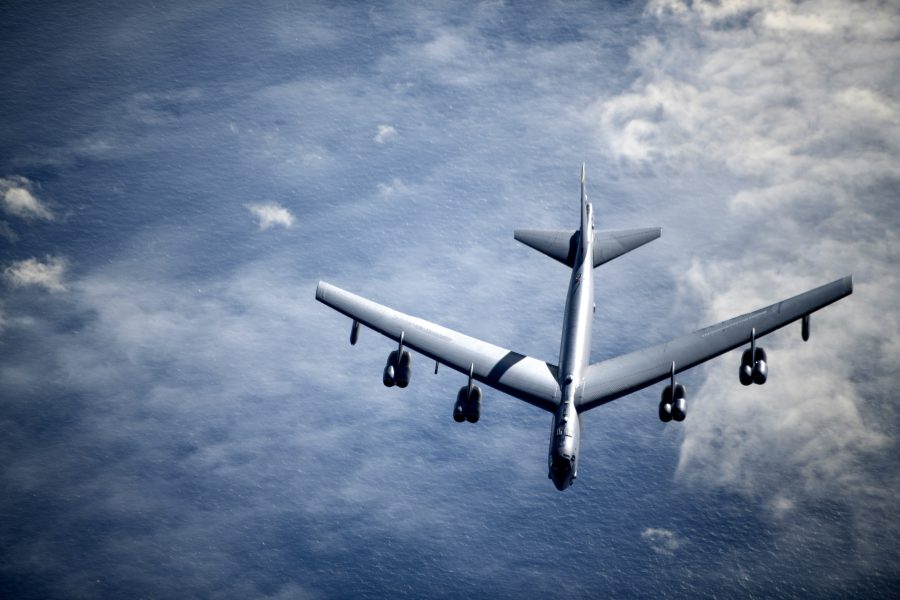Over the course of four days, the Air Force sent its two nuclear-capable bombers on long-distance training flights to Europe and the Pacific, while B-1s flew their own long-range missions in both regions.
On May 11, B-1s from Ellsworth Air Force Base, S.D., flew from their home base to Eastern Europe, integrating with Danish F-16s and Polish F-16s and MiG-29s. The aircraft flew over Bornholm Island, Denmark, Warsaw in Poland, Latvia, and Lithuania.
U.S. Air Forces in Europe said in a release that the mission, conducted amid the new coronavirus outbreak, is a demonstration of U.S. readiness to allies.
“The health of our team has been a top priority from the start of our COVID response and is key to sustaining missions like the bomber task force,” USAFE boss Gen. Jeffrey Harrigian said in the release. “Although mitigation efforts created challenges to overcome, our allies, partners, and adversaries should make no mistake that we are ready, able, and willing to deter and defend when called upon.”
As the B-1s returned home, they participated in training with Royal Canadian Air Force CF-18s who intercepted them as they entered the Canadian Air Defense Identification Zone. Additionally, U.S. F-16s intercepted the bombers as they approached the Continental U.S. North American Aerospace Defense Command region.
“Conducting multiple intercepts across NORAD’s Canadian and Continental U.S. Regions exercised our ability to defend the homelands,” NORAD boss USAF Gen. Terrence O’Shaughnessy said in a release. “While we are combating COVID-19 we remain closely linked with our other combatant commands. Our collective work enhances our ability to deter, detect and, if necessary, defeat any threat to North America.”
On May 7, two B-2s from Whiteman Air Force Base, Mo.; two B-52s from Minot Air Force Base, N.D.; and two B-52s from Barksdale Air Force Base, La., launched for training missions in the U.S. European Command and U.S. Indo-Pacific Command areas of responsibility, U.S. Strategic Command said in a statement.
The mission was planned “to exercise theater communications with strategic assets,” STRATCOM said in a statement. While the command did not detail where the bombers flew, photographs show B-52s receiving fuel from KC-135s assigned to the 351st Air Refueling Squadron at RAF Mildenhall, England.
The next day, two B-1Bs from the 9th Expeditionary Bomb Squadron deployed to Andersen Air Force Base, Guam, flew to the South China Sea for a mission “in support of Pacific Air Forces’ training efforts and strategic deterrence missions to reinforce the rules-based international order” in the region, according to a PACAF release.
The bombers deployed to Andersen from Dyess Air Force Base, Texas, on May 1 as part of a bomber task force. The Air Force in April ended the 16-year-old Continuous Bomber Presence mission to Guam, and instead is sending smaller bomber task forces to the region as part of a new construct called “dynamic force employment.”
Air Force Global Strike Command boss Gen. Timothy Ray said this new plan will show that bombers can operate regularly across the globe even without being permanently deployed to bases abroad.
“We can come and go anytime they need us, we don’t need to be there physically,” he said.
